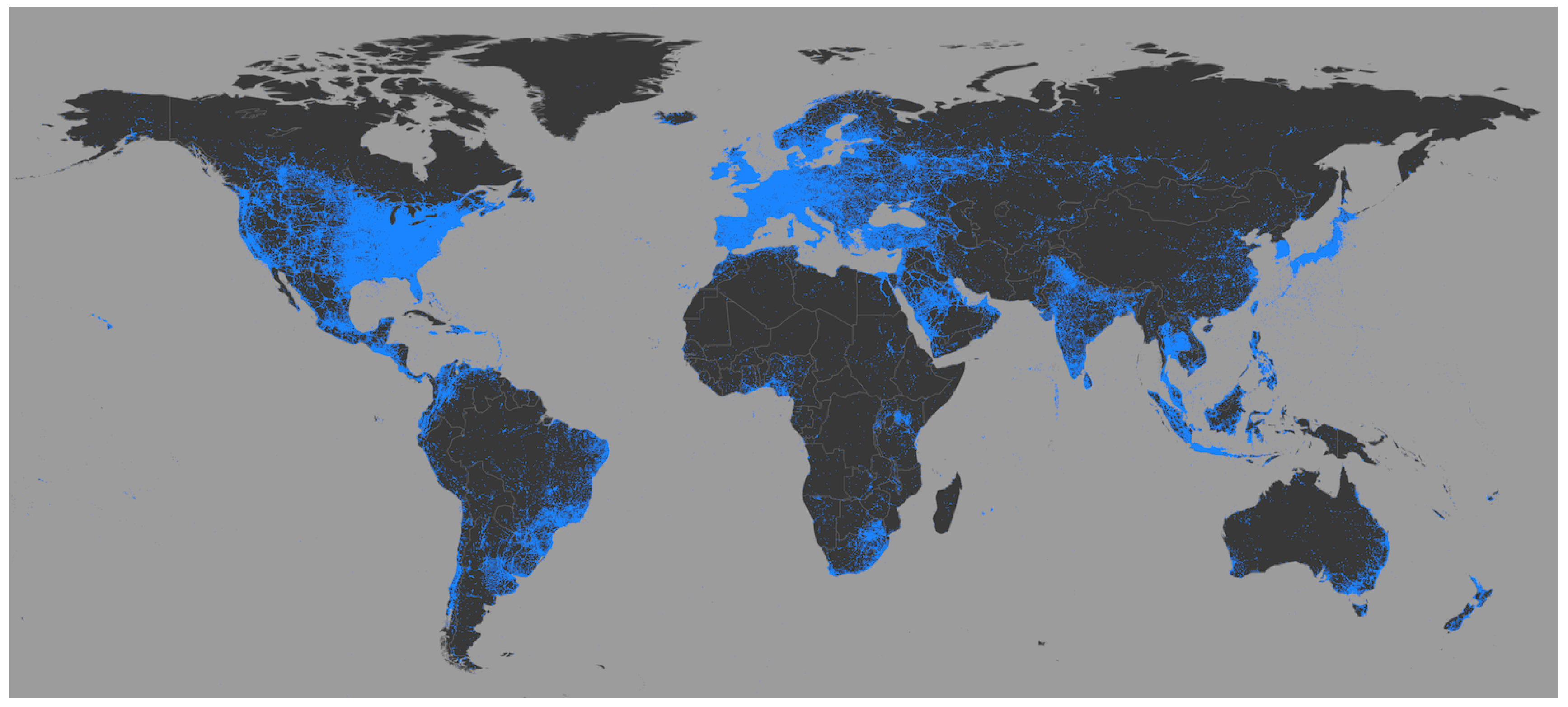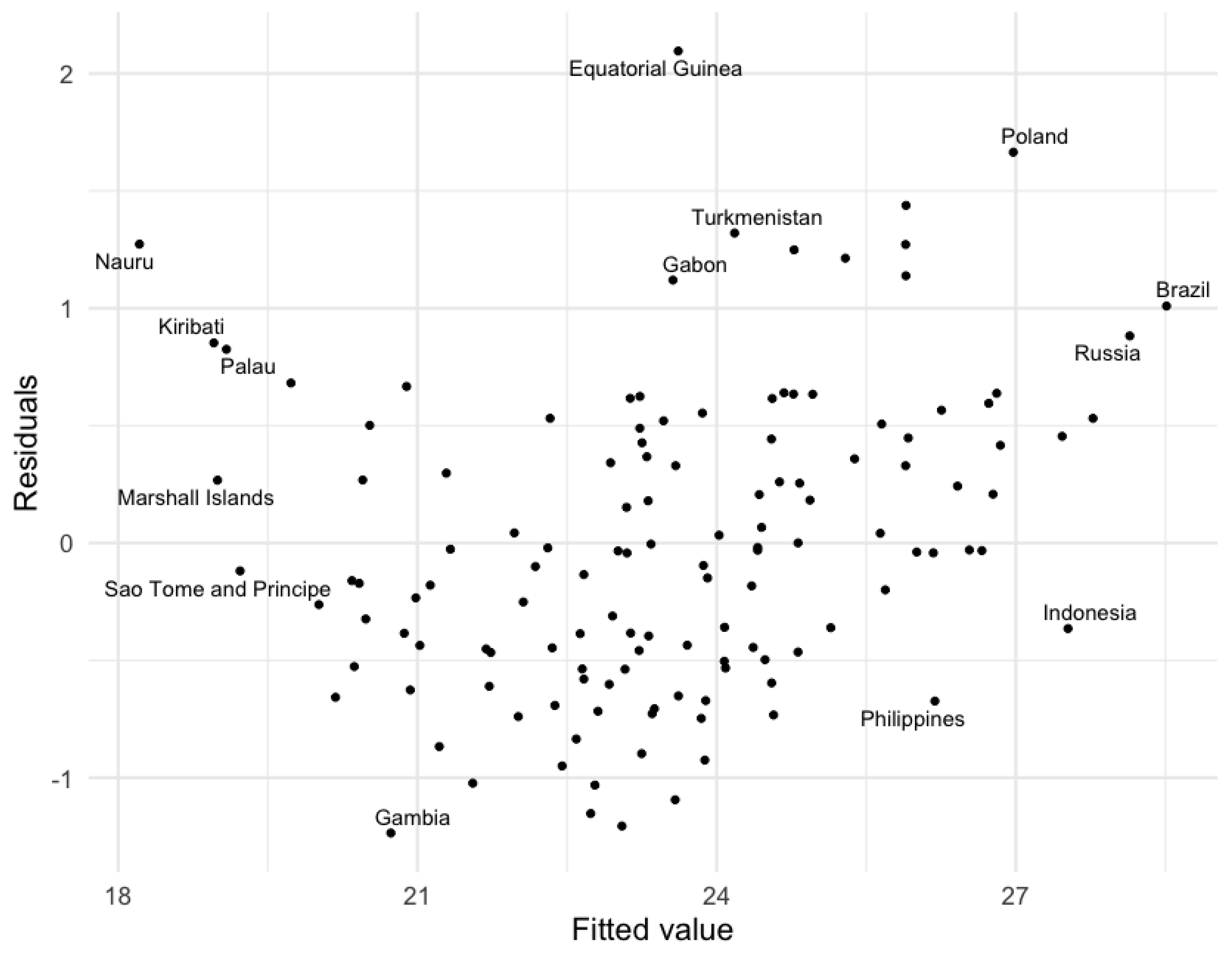1. Introduction
On 7 April 2014, the Nigerian Bureau of Statistics declared that their 2013 gross domestic product (GDP) estimates were being revised upward from USD 269 billion to USD 510 billion [
1]. Overnight, the Nigerian economy had grown by 89 percent and was now the largest economy in Africa, overtaking South Africa in the process.
However, this sudden increase in GDP was not a result of successful economic policies or benevolent external conditions. Instead, it was a product of a national accounting process known as rebasing. Until 2014, Nigeria’s GDP was constructed by sampling businesses weighed in accordance to the importance each sector had on the Nigerian economy in 1990. Evidently, in the ensuing years, the economy morphed. This made emerging industries vastly underrepresented in the country’s GDP estimate, and vice versa. In this sense, the new and updated estimate was expected to more closely reflect the true GDP of the Nigerian economy. However, it also meant that up until that point, policymakers, investors, and everyone else making economic decisions based on the old GDP estimates were relying on grossly inaccurate economic data.
This example, of which there are several others in the past few years (e.g., Zambia in 2010, Kenya and Tanzania in 2013, and Uganda in 2014 just to name a few examples from other African countries. In each of these cases, the revised figures where 13–28% higher than the previous estimates), sheds light on how complicated it is to put together national statistics and how (oftentimes) inaccurate official GDP estimates are.
The inaccuracy of GDP measurements at the country level tends to be accentuated in developing countries. This is due to several factors. First, statistical offices in developing countries tend to have fewer resources to construct these estimates. Second, given that developing countries tend to have relatively large informal sectors, they are oftentimes included in official estimates [
2]. Given that informal companies many times do not keep proper accounting books, this generally complicates matters because informal companies tend to provide inaccurate financial statements. These conditions leave statistical offices in developing countries with a complicated task, to put together a reliable estimate of the size of the countries’ economy, which includes a sizeable sector that generally does not count with reliable data and to put together this estimate with limited resources. The inaccuracy of GDP measurements at the country level tends to be accentuated in developing countries. This is due to several factors. First, statistical offices in developing countries tend to have fewer resources to construct these estimates. Second, given that developing countries tend to have relatively large informal sectors, they are oftentimes included in official estimates [
2]. Given that informal companies many times do not keep proper accounting books, they tend to provide inaccurate statements of their own finances.
These conditions leave statistical offices in developing countries with a complicated task, to use their limited resources to put together a reliable estimate of the size of the countries’ economy from a sample of (mostly) unreliable firm-level data. This leads economists like [
2] to conclude that GDP statistics from African countries are “best guesses of aggregate production”.
These concerns and limitations have motivated efforts to find proxies that may estimate economic activity. Several authors have proposed using satellite night-light images to estimate GDP at the country level or sub-national level (A thorough overview can be found in [
3]). The use of night-lights has motivated economists to look for other proxies to measure economic activity. Ref. [
4] estimate the German business cycle at a monthly level by measuring toll activity on important highways by heavy transport vehicles. On their part, Ref. [
5] use Google Trends search data to estimate economic activity. Finally, in a paper closely related to this one, Ref. [
6] suggests the use of social media data for estimating GDP, both at the national and sub-national level. The paper shows how social media can be used as a supplement to official GDP estimates to improve their accuracy. Given their accuracy and availability, these alternative estimates could also serve as a tool for non-governmental agencies and international organizations to corroborate official GDP estimates.
This paper proposes a way in which statistic agencies and international organization can use social media data to improve the accuracy of their economic measurements. In particular, I use all publicly available tweets with images sent in 2012 and 2013 to estimate GDP at the country level for developing countries. I find that one can accurately estimate GDP at the country level by using the volume of tweets shared from each location. I then gather World Bank data on the quality and fidelity of the official economic data released by each country and find that the residuals of the Twitter-GDP estimates for countries with allegedly poor data quality tend to be larger than for countries that are considered to have more reliable economic data. I finalize by using the aforementioned rebasing case of Nigeria as an example of how social media data offers valuable information in finding the true level of economic activity for a developing country. For 2012 and 2013, I find that the GDP estimate using Twitter data is in fact quite close to the greatly revised estimate.
2. Materials and Methods
The Twitter data for this paper were obtained directly from Twitter. The dataset was awarded via the 2014 Twitter Data Grant submission, which was awarded to the Cultural Analytics Lab directed by Lev Manovich. The dataset contains all Twitter posts containing geo-tagged images between 1 January 2012 and 31 December 2013. As per [
7], approximately 20% of tweets are geographically located, while [
8] reports that 42% of tweets contain an image. However, the latter analysis was limited to 1 million tweets sent by US West Coast users, which could skew the results. To account for this, the author collected 10,000 tweets randomly in December 2018 using the Twitter API. Among this set, 4.9% of tweets were geo-located, and 22.8% contained images.
The dataset contains 140 million tweets from all over the world, each with a unique Twitter user ID, the latitude and longitude from where the tweet was sent from (with 5 decimal points for a precision of 1.1 m), the tweet’s date and time, the image tweeted, and any accompanying text.
Figure 1 shows a map indicating the location from where all image tweets were sent from.
Bots that sent over five tweets in a minute were removed to prevent them from biasing the data. However, this did not significantly alter the results presented in
Section 3.
Table 1 summarizes the Twitter data by year and by income group (based on the World Bank’s classification) for developing countries. The data show that the average number of tweets per country rose from around 50,000 in 2012 to almost 250,000 in 2013, suggesting an increase in image tweets. Additionally, while countries with higher incomes had more tweets on average, the growth rates of tweet numbers from 2012 to 2013 were higher among lower income countries.
4. Discussion
The main goal of this paper is to study whether social media data from Twitter could be used as a proxy for estimating GDP for developing countries. In particular, this paper analyzes whether social media data can be used to improve the accuracy of official GDP estimates for low-income countries. First, I find that the volume of image tweets sent from a country, together with the population, can explain roughly 90% of the cross-country variation in GDP for developing countries. This is pretty much in line with what others have found for using social media to estimate economic activity [
5,
6].
As discussed in
Section 1, developing countries tend to have highly inaccurate official GDP estimates. Hence, it is possible that a significant share of the differences between the Twitter-GDP and official GDP estimates arise due to measurement errors in these official GDP estimates. If this is in fact the case, data from tweets could be used by statistical agencies as a complementary measure to produce more accurate estimates. I study this by collecting the residuals in the baseline model and then running a regression on a measure of data quality in each country. The negative coefficient on the data quality index in Equation (
2) suggests that there is information to be captured from Twitter data that could help close the gap between estimated GDP and the
true GDP. Social media data could thus be used as a complement to survey data to increase the accuracy of GDP estimates.
Furthermore, given that the measurement errors stemming from official GDP estimates and Twitter-GDP estimates are not correlated, we can use both measures together to improve their accuracy [
10]. This was also one of the motivating factors to push for the use of night-lights to improve GDP measurements in [
11].
A word of caution should be expressed before incorporating social media (or related) data to produce official statistics. While these data sources could represent valuable information, it is troublesome to incorporate measures that only represent a proxy. In other words, it is important to understand the underlying mechanism relating economic activity and social media posts. Ref. [
6] explores the underlying mechanism between tweets and economic activity and finds evidence to suggest that social media posts are often used by users to showcase consumption of goods and services to their network of followers. Thus, a larger number of posts represents a larger share of consumption, which is a significant part of what drives the economy.
Nonetheless, the frequency with which users post on social media and reasons why they choose to do so can evolve and change quickly. A much deeper understanding of these mechanisms are needed before governments and statistic agencies rely on these measures when putting together official measures. Given that people are generating increasingly large volumes of data on social media applications (and related software), it would be sensible to research these more carefully to see if they can help us obtain more accurate measurements on the state of the economy.








